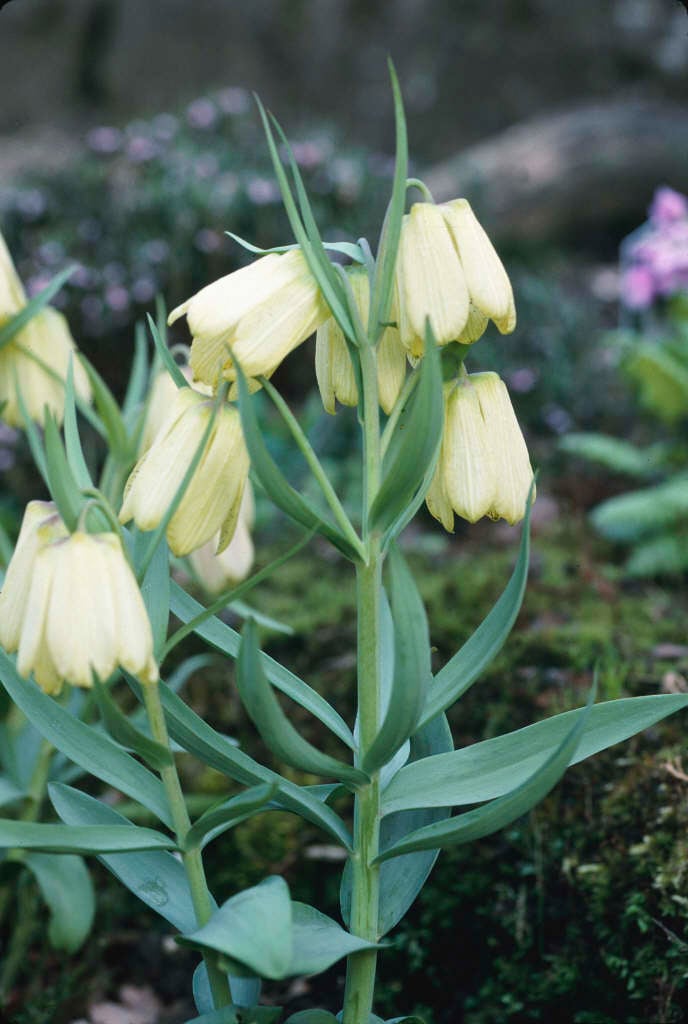Size
Ultimate height
0.1–0.5 metresTime to ultimate height
2–5 yearsUltimate spread
0–0.1 metreGrowing conditions
Moisture
Moist but well–drained, Well–drainedpH
Acid, Alkaline, NeutralColour & scent
| Stem | Flower | Foliage | Fruit | |
| Spring | ||||
|---|---|---|---|---|
| Summer | Brown Green Yellow | Green Grey Silver | ||
| Autumn | ||||
| Winter |
Position
- Full sun
- Partial shade
Aspect
North–facing or West–facing or East–facing or South–facing
Exposure
Exposed or Sheltered Hardiness
H5Botanical details
- Family
- Liliaceae
- Native to GB / Ireland
- No
- Foliage
- Deciduous
- Habit
- Columnar upright
- Potentially harmful
- Ornamental bulbs, not to be eaten. Wear gloves and other protective equipment when handling. Pets: Ornamental bulbs, not to be eaten - see the HTA guide to potentially harmful plants for further information and useful contact numbers
- Genus
Fritillaria are bulbous herbaceous perennials with lance-shaped or linear leaves and nodding bell-shaped or bowl-shaped flowers that may be solitary or in racemes or umbels
- Name status
Correct
- Plant range
- E Siberia, NW China
How to grow
Cultivation
Grows well in most fertile, humus-rich, well-drained soils and prefers cool, moist summers. Handle the fragile bulbs carefully and plant at four times own depth
Propagation
Propagate by seed, sown in pots in a cold frame in autumn. Needs exposure to winter cold for germination in spring. Divide offsets in late summer
Suggested planting locations and garden types
- Rock garden
- Wildflower meadow
- Cottage and informal garden
- Flower borders and beds
Pruning
No pruning required
Pests
May be susceptible to slugs and lily beetle
Diseases
Generally disease-free
Get involved
The Royal Horticultural Society is the UK’s leading gardening charity. We aim to enrich everyone’s life through plants, and make the UK a greener and more beautiful place.
